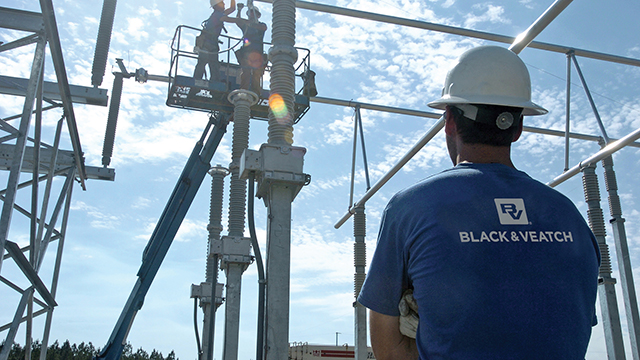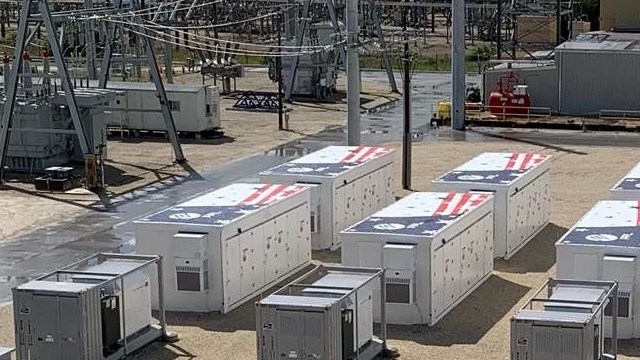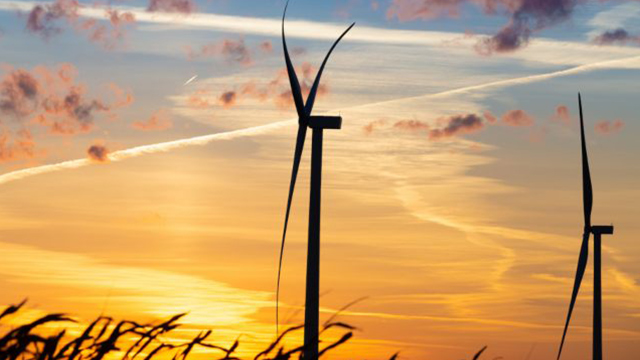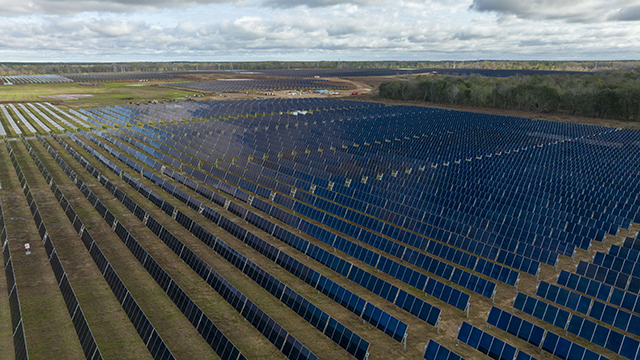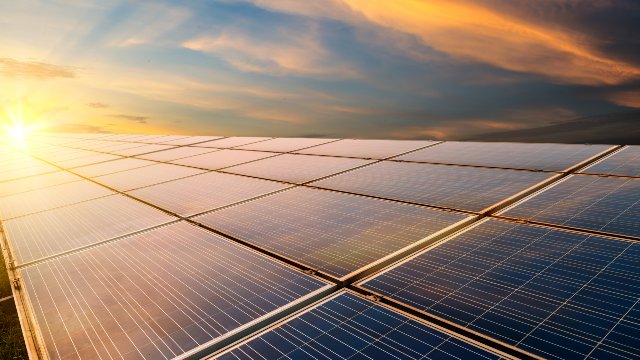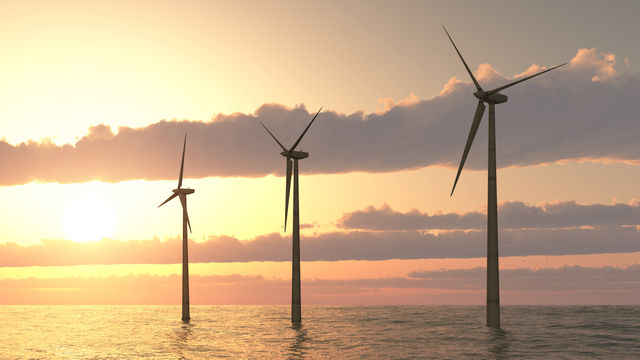By Mario Azar
Rising demand for clean and sustainable energy has made this one of the most dynamic and exciting moments in the history of power supply. It's also one of the most vexing: Across diverse geographies, and even more diverse stakeholders, there are both opportunities and deep challenges to meeting the social and economic goals tied to the reliable, resilient supply of quality power.
Renewable energy from solar, wind and battery storage is grabbing a broader footprint by the day, along with microgrids and other distributed energy resources (DERs), enabling utilities and governments to integrate those energy sources onto the grid. Electric vehicles (EVs) and electrified fleets — everything from buses to garbage trucks and enterprise cars — are growing in numbers, pressuring power providers to accommodate charging demand.
Consumers, equipped with increasingly sophisticated technology and no longer content with arms-length relationships, are demanding real-time, transparent engagements with their utility. Above it all swirls persistent regulatory questions as well as continued focus on reliability, aging infrastructure and long-term investment — all topics detailed in Black & Veatch's 2019 Strategic Directions: Electric Report.
Simply put, the power industry, after 130 years, needs repowering. And in this complex, multifaceted energy ecosystem where there's no one-size-fits-all dynamic, it's simply going to have to become more flexible and nimble, with governments, regulators and customers actively taking part in collaborative solutions.
In last year's report, seven of every 10 electricity industry stakeholders surveyed believed that a "utility death spiral" created by DER advancements and consumer demand for cleaner energy is a real, possible outcome if the industry doesn't adopt alternative energy solutions and/or regulations fail to recognize flexibility. In this year's report, those competitive worries remain.
This year's survey — which drew responses from nearly 900 industry leaders — shows that 46 percent of respondents said alternative "behind-the-meter" energy supply options by customers or third parties threaten their utility business model, if regulators preclude market flexibility. Forty-three percent said the threat could come from a utility's failure to deploy its own alternative energy solutions. More than one-quarter of respondents weren't sweating it, believing the adoption rate of new generation sources is slow relative to the importance of traditional generation.

The conclusion: having a balanced generation mix with a diversity of fuel sources remains key to meeting energy demand with reliable baseload generation.
While the survey focused on North America respondents, the points raised and the industry issues that need to be addressed are ones of global focus. Rather than having to reinvent the wheel, there are opportunities to look at various regions of the world — including Europe, an early adopter of the needed energy transition — and apply what has been learned to address these dynamics in a faster and more efficient manner.
The world's shifting power market is unfolding in interesting ways, and our 2019 report captures the diverse challenges facing organization leaders and the solutions they're finding in the United States, Asia, Latin America, Europe and elsewhere. Among the themes, we explore the following:
- Growth of Renewables: Around the globe, decarbonization goals reliant on the growing integration of renewable energy are gaining traction in helping utilities, governments and corporations become greener as they work to reduce their carbon footprint.
- Conventional Generation: Portfolio diversification continues to offer utilities the best option to meet reliability needs while mitigating intermittency issues through a diverse generation mix that takes advantage of natural gas as an affordable, plentiful energy source.
- Power Transmission: As the popularity of renewable energy broadens by the day, utilities are investing well beyond repairing and replacing their graying infrastructure as they scramble to link renewable energy sources to the grid.
- Power Distribution: Utilities in areas of high DER penetrations are facing an immediate need to modernize the grid as they grapple with a customer base increasingly empowered by renewable energy and battery storage options.
- EV Fleets: The electrification of fleets is picking up speed as fleet and sustainability managers search for cost savings amid tightening emissions standards. Our survey shows ample engagement by utilities with their local transit agencies as they work towards electrification, which all begins with dialogue and planning.
- Cybersecurity: Technology is helping improve utilities' operational efficiencies through digitalization and the Internet of Things (IoT), productivity and resilience. But there's a potentially insidious price to such advances: Networks are vulnerable to cyberattacks that many believe will become more prevalent and sophisticated.
A Call for Collaboration
Despite contrary views from some industry watchers, conventional generation will remain largely entrenched in North America, Latin America and Asia foundational elements of a balanced energy portfolio, while critical infrastructure investments in both transmission and distribution must continue to address reliability issues. Clean energy-driven public policy goals across the world, combined with falling costs for renewables and energy storage, present displacement scenarios for traditional generation sources and assets. But are renewables ready to claim a baseload-generating stake in global power generation?
Some market shifts suggest natural gas will remain the primary baseload driver for the foreseeable future. In China, for instance, where air quality concerns are driving power generation away from fossil fuel sources, the government is pursuing wider adoption of renewables, although its near-term road map relies significantly on liquefied natural gas (LNG) imports to create distance from coal.
While renewables, including offshore wind and floating solar, continue to grab attention despite current scalability challenges, natural gas most certainly will remain a formidable player in the global energy mix for some time. The International Energy Agency expects demand for that fuel source to grow by 60 percent in the next couple of decades, and infrastructure for LNG is accelerating as the United States emerges as a global force in natural gas production.
A Different Kind of Customer
While both large commercial and industrial (C&I) customers — and soon, a growing number of regional customers — have the ability to deploy microgrids and rely on power purchase agreements (PPAs) to meet sustainability and resiliency goals, there remains a need to link to the network as either a backstop or as a means to sell excess power back into the grid.
The grid must evolve to handle these changing load conditions with an intelligence level not anticipated even a decade ago, meaning utilities and regulators must continue to work together — far quicker than the current regulatory construct — to meet these shifting customer expectations and energy landscapes. In addition, utilities must turn to new technologies that improve their efficiencies and respond to savvy customers increasingly wanting a digital, always-on experience with their utility, including apps that enable consumers to directly manage in their energy usage and accounts.
Gone are the days when generation, transmission and distribution operated in isolation; renewable energy continues to grow and its impact will reshape transmission and distribution. Distributed energy also is driving needed changes to the grid in addition to offering power generation solutions.
The power industry must rethink its business model and address the future today through a profound transformation, complete with interaction with C&I customers who demand that their voices be heard. It's also important that utilities, customers and solutions providers with deep experience in the engineering, construction and operations of energy assets come together. They must have a dialogue with regulators about matters of not only resilience and reliability but about all of the complex and dynamic issues facing power leaders today.
Mario Azar is president of Black & Veatch's power business. A 28-year industry veteran, Azar leads all aspects of the power business including strategy, business development, project execution, operations, workforce planning, and organizational capability and effectiveness. Before joining Black & Veatch, Azar held several other diverse energy positions. His decades of global leadership experience in the power and oil and gas markets position him to help clients adapt to the transformational shifts impacting the production, delivery and storage of electricity.
